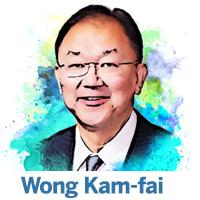The rapid development of Artificial Intelligence (AI), particularly generative artificial intelligence (GenAI), is having a profound impact on various creative fields. GenAI can produce not just static creations like text, comics and paintings but also dynamic works such as songs and videos. The advent of GenAI has emerged as a fabulously productive tool for the creative industry.
 AI technology advances at a rapid rate. However, legislation struggles to keep pace with the evolving regulatory demands. As such, the development of AI is like a loose horse, and the trainers can only try to catch up from behind.
AI technology advances at a rapid rate. However, legislation struggles to keep pace with the evolving regulatory demands. As such, the development of AI is like a loose horse, and the trainers can only try to catch up from behind.
Many countries are attempting to formulate rules and regulations for AI. Similarly, the Hong Kong Special Administrative Region government is diligently working on this challenge. In June, the Office of the Privacy Commissioner for Personal Data released a report titled Artificial Intelligence: Model Personal Data Protection Framework. In July, the Commerce and Economic Development Bureau launched the Public Consultation on Copyright and Artificial Intelligence. The consultation paper examines the practicality of the existing Copyright Ordinance to GenAI and proposes legislative amendments.
The consultation paper clarifies that the current Copyright Ordinance inherently encompasses provisions necessary for affording copyright protection to works generated by AI. Regarding the originality prerequisites for creating literary and artistic works, these will be progressively addressed through the accumulation of case law. In terms of identifying the author and owner of a literary or artistic work under current law, it refers to the arranger who is integral to the creation process of the work. Whether the arranger is the developer, programmer, trainer, operator of the AI model, or the end-user, among others, will depend on the specific factual circumstances. In practice, the distribution of copyrights between the copyright owner and the users of the AI system can be stipulated in a contract between the parties.
For example, last year, a piece of generative work used “Temple Street Prince” Wan Kwong’s voice to cover boy band star Keung To’s original song My Dear Friend. According to the current copyright ordinance, Wan should enjoy the protection of moral rights in ordinary literary and artistic works. The distribution of copyright between Keung, his company, the song composer and the lyricist, the creator of the generated work, the AI system, and Wan should be negotiated among these stakeholders according to market mechanisms rather than forcibly divided by law.
Another issue of significant concern within the community pertains to the legal liability for infringement of generative works. The consultation paper suggests adhering to market practices and refraining from proposing legislative amendments. Currently, it is common market practice for AI systems and end-users to contractually incorporate terms of use or service agreements to address legal liabilities stemming from the creation of such works.
The only amendments proposed in the consultation paper to the Copyright Ordinance were “specific copyright exemptions”. The existing Copyright Ordinance contains several copyright exemptions, each of which is limited to certain special circumstances or purposes, such as research, private study or education, and is subject to the relevant ordinance. However, there is currently no exemption covering computer data analysis and processing. It is therefore proposed that text and data mining exemptions be introduced, partially for building AI models for commercial purposes and privately funded research projects. In order to strike a balance between the protection of copyright holders and the imposition of conditions, such as the lawful use of copyright works by users and the use of licensed copyright works through negotiation for training, it is also proposed to establish an opt-out mechanism for copyright holders to restrict access to their copyright works.
This amendment is necessary because the development of AI tools and large language models requires a vast amount of data, including for example news, literary and artistic creations. Exemptions for scientific and academic purposes are less controversial. And to prevent this exemption from commercial works, the aforesaid opt-out mechanism can be used; in this way, the copyright of the owner can be protected. In addition, there is already a Creative Commons mechanism, which allows copyright owners to indicate the rights of use of their works. Alternatively, the legislative amendment is another way to provide explicit legal protection for practices that the industry has widely accepted.
Without copyright protection, all creative and artistic endeavors would be rendered meaningless. GenAI presents immense opportunities for both artistic and literary creations, yet it also poses significant challenges to copyright protection. The government’s release of the consultation paper demonstrates a commendable commitment to addressing the copyright challenges that GenAI has posed.
The author is a Legislative Council member, Associate Dean (External Affairs), Faculty of Engineering, the Chinese University of Hong Kong and vice president, Hong Kong Professional and Senior Executives Association.
The views do not necessarily reflect those of China Daily.


